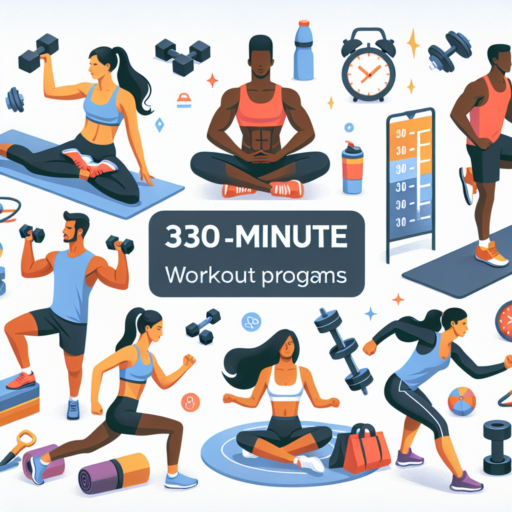Why is a Warm-Up Crucial Before Running?
Understanding the importance of a proper warm-up before engaging in any running activity can make a notable difference in both performance and overall health. A warm-up serves as a preparatory phase for the body, gradually increasing the heart rate and circulating blood to the muscles that will soon be in action. This progressive approach ensures that the body is not only physically prepared but also mentally tuned for the run ahead.
Enhanced Performance: Initiating a running session with a warm-up is fundamental for enhancing running performance. Topics covered under this critical aspect include the efficient use of oxygen by the body, improved speed and endurance, and the increased flexibility and strength of the muscles involved. Clearly, a warm-up isn’t just about prevention; it’s about empowering the body to perform at its peak.
Reduction in Injury Risk: The correlation between warming up and a reduction in running-related injuries is well-documented. By increasing muscle temperature and flexibility, a warm-up reduces the chances of strains, sprains, and other common injuries. This preventative measure is especially crucial for those who run regularly or are increasing their running intensity and duration.
The Science Behind Effective Running Warm-Ups
Understanding the Science Behind Effective Running Warm-Ups is crucial for athletes seeking to improve their performance and minimize injury. Warm-ups prepare the body for the demands of running by increasing blood flow to the muscles, enhancing muscular flexibility, and stimulating the cardiovascular system. This preparatory phase not only helps to boost performance but also plays a significant role in injury prevention.
At the core of effective running warm-ups lies the principle of dynamic stretching. Unlike static stretches that involve holding a position, dynamic stretches are performed through movement. These activities mimic the motion of running, thereby engaging the same muscle groups that will be used during the run. Research suggests that dynamic stretching can significantly improve leg muscle power, providing a solid foundation for a safer and more potent running experience.
Another integral component is the concept of progressive aerobics. This approach involves starting with low-intensity exercises and gradually increasing the intensity to raise the body’s core temperature. Activities like jogging in place, high knees, or butt kicks are excellent examples. The gradual escalation serves a dual purpose: it prepares the muscular system for the impending exertion and reduces the risk of strains or sprains.
5 Essential Warm-Up Exercises Every Runner Should Know
Warm-up exercises are an indispensable part of a runner’s routine, serving not just to enhance performance but also to prevent injuries. Before hitting the track or embarking on a long-distance run, it’s crucial to prepare your body with exercises designed to activate and engage the muscles you’ll rely on most. From improving circulation to increasing flexibility, the benefits of proper warm-up exercises are vast. Below, we will explore five essential warm-ups that every runner should incorporate into their pre-run routine.
Dynamic Leg Swings
Dynamic leg swings provide a perfect start to any running warm-up routine. This exercise effectively loosens the hips, hamstrings, and glutes, areas that are pivotal for runners. By standing next to a wall or a stable surface and swinging one leg forward and backward, and then side to side, runners ensure a dynamic stretch that prepares their lower body for the impact ahead. Emphasizing fluid movement over force is key to maximizing the benefits of dynamic leg swings.
Lunges With a Twist
Lunges with a twist not only prepare the legs but also engage the core, adding a rotational movement that enhances flexibility and dynamic balance. To perform this exercise, step forward into a lunge and rotate your upper body towards the leg that is forward, ensuring to keep your posture straight. This promotes core strength and stability, which are critical for maintaining form and efficiency during a run.
High Knees
High knees are a high-intensity warm-up exercise that increases heart rate, preparing the cardiovascular system for the workout ahead. They mimic the running motion, making them an effective way to warm up specifically for running. Executing high knees with emphasis on bringing the knees to waist level will ensure a thorough warm-up of the quads and hip flexors, enhancing knee lift and stride frequency during the run.
Dynamic Stretching vs. Static Stretching: What’s Best Before Running?
The debate between dynamic stretching and static stretching has prevalent implications for runners seeking to enhance their performance and reduce the risk of injury. Understanding the nuances of each stretching technique and their effects on the body before embarking on a run is crucial for optimizing your warm-up routine.
Dynamic stretching involves moving parts of your body and gradually increasing reach, speed of movement, or both. It’s essentially about getting your body accustomed to the types of movements you’ll be making during your run. Examples include leg swings, arm circles, and gentle lunges. Studies suggest that dynamic stretching can improve your power, flexibility, and running efficiency, making it an ideal precursor to running.
On the other hand, static stretching involves holding a stretch in a comfortable position for a period, typically 15-60 seconds. While once a staple in many warm-up routines, research shows that engaging in static stretches before running might reduce strength and performance. However, it can still play a critical role in post-run routines to help with cooling down and increasing flexibility over time.
Choosing the Right Stretching Technique
Selecting between dynamic and static stretching before running boils down to understanding your body’s needs and the goals for your run. Dynamic stretching warms up the body more effectively for the demands of running, making it a generally preferred method for pre-run routines. Yet, incorporating a mix of both, with a focus on static stretching post-run, may offer the best balance for both performance and recovery.
No se han encontrado productos.
A Step-by-Step Guide to Your Perfect Run Warm-Up Routine
Preparing your body for a run is crucial to maximize performance and minimize the risk of injury. A comprehensive warm-up routine increases blood flow to your muscles and preps your cardiovascular system, making your actual run feel more comfortable and efficient. This guide will walk you through a step-by-step approach to crafting your perfect run warm-up routine, ensuring you’re ready to hit the pavement (or trail) in the best possible condition.
Initiate with Dynamic Stretches
Start your warm-up with dynamic stretches to loosen up your muscles and joints, making them more flexible and ready for the activity ahead. Focus on stretches that mimic running motion, such as leg swings and lunges, to effectively prepare your body. Incorporate at least 5-10 minutes of dynamic stretching to ensure all major muscle groups are addressed.
Activate Your Muscles
After stretching, it’s time to activate the key muscle groups involved in running. Incorporate exercises like bodyweight squats, glute bridges, and walking high knees to awaken your glutes, hamstrings, and quads. Activation exercises not only increase muscle readiness but also enhance your neuromuscular connection, which is vital for an efficient run.
Each step of this routine plays a significant role in preparing your body for the demands of running. By dedicating time to a thorough warm-up, you’re setting yourself up for a successful, enjoyable run with a considerably lower risk of injury. Follow this guide to tailor a warm-up routine that meets your individual needs and preferences, ensuring you’re fully prepped for your running endeavors.
Common Mistakes to Avoid During Your Run Warm-Up
Warming up before a run is crucial to enhance performance and prevent injuries. However, many runners make mistakes that can undermine the effectiveness of their warm-up, leading to suboptimal outcomes or even harm. Recognizing and avoiding these common pitfalls is essential for a productive and safe running experience.
Skipping Dynamic Stretches
One prevalent mistake is forgoing dynamic stretches in favor of static stretching. Dynamic stretches involve movement and are designed to increase blood flow and loosen up muscles, preparing them for the upcoming activity. They simulate running motions, thereby priming your body for a run. On the other hand, static stretches, while beneficial at other times, may not be the most effective way to warm up as they can lead to overly relaxed muscles, reducing their explosive power when you start your run.
Not Gradually Increasing Intensity
Another common error is neglecting to gradually increase the intensity of the warm-up. A sudden jump into intense activity can shock the muscles, potentially leading to strains or sprains. The warm-up should start slowly, gradually building up to a pace slightly below your typical running speed. This approach helps in acclimatizing your body to the demands of your run, ensuring a smoother transition from warm-up to the main workout.
Omitting a Pre-run Checklist
Lastly, many runners overlook the importance of a pre-run checklist. A holistic warm-up routine includes checking your gear, ensuring hydration, and mentally preparing for the run ahead. This pre-run ritual can make a significant difference in your running performance and enjoyment. Paying attention to these details can prevent discomfort and distractions, allowing you to focus fully on your run.
How Long Should Your Running Warm-Up Last?
Understanding the optimal duration for a running warm-up can significantly impact your performance and injury prevention. While the ideal time can vary based on individual fitness levels and running intensity, a general guideline suggests that warm-up routines should last between 10 to 20 minutes. This time frame allows your body to gradually ramp up its cardiovascular system and increase blood flow to the muscles, preparing them for the activity ahead.
Dynamic Stretching plays a crucial role in an effective running warm-up. Incorporating movements like leg swings, lunges, and arm circles for about 5 to 10 minutes can enhance your flexibility and range of motion, contributing to a more efficient running form. It’s essential to focus on dynamic rather than static stretches during the warm-up to avoid reducing muscle strength and performance.
Another component to consider is a light jog or brisk walk. Starting with a lower intensity activity for 5 minutes before gradually increasing your speed allows your body to adapt and reduces the risk of injury. This approach helps in elevating your heart rate and prepares your cardiovascular system for the upcoming exertion. Remember, the goal of your warm-up is to mirror the movements of running, making the transition into your run seamless and effective.
Warm-Up Tips for Different Running Conditions
Preparing your body for a run is crucial, regardless of the weather conditions or the terrain. Warming up properly can significantly reduce the risk of injury and improve your performance. Here, we explore effective warm-up strategies tailored to various running conditions, ensuring you’re ready to hit the ground running.
For Hot and Humid Weather
In hot and humid environments, your warm-up should focus on hydration and activating your muscles without overheating. Begin with a dynamic stretching routine to increase blood flow to your muscles. Include exercises like leg swings and arm circles, which mimic running movements. It’s also essential to drink water or a sports drink to stay hydrated, but avoid overhydrating immediately before running to prevent discomfort.
For Cold and Dry Conditions
Running in colder climates requires a warm-up regimen that prepares your body for the brisk environment. Start with a 5-10 minute brisk walk or light jog to gently raise your body temperature. Incorporate a series of dynamic stretches, paying extra attention to your calves, hamstrings, and quadriceps, as these muscles are particularly susceptible to injuries in the cold. Wearing layers can help maintain your body heat and allow for the gradual increase of your heart rate.



